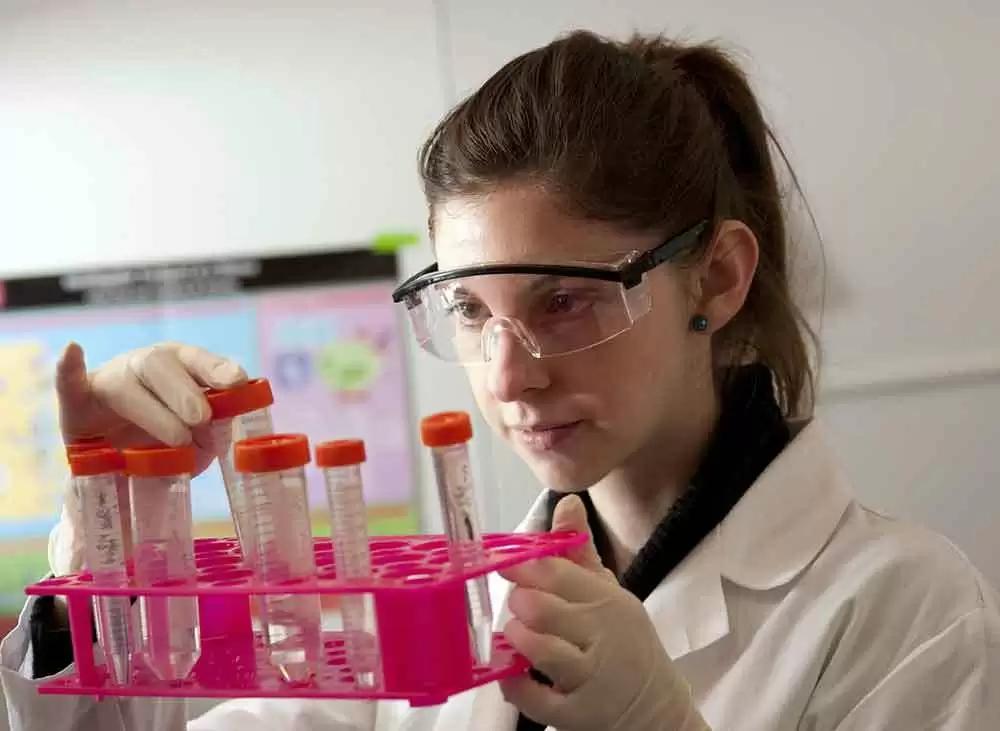Celiac.com 11/12/2025 - This summary explains a prospective study that followed children who were more likely than average to develop celiac disease because a parent or a sibling already had the condition. The researchers focused on a common blood marker used to detect celiac disease: tissue transglutaminase immunoglobulin A. The central question was simple but important: does this marker climb gradually in the months before it turns positive, or does it switch from normal to positive in a short window of time? The answer has direct consequences for how often families and clinicians should test children who are at higher risk.
Why This Question Matters
Celiac disease is an immune condition in which eating gluten damages the small intestine. Blood tests that look for antibodies against tissue transglutaminase are widely used to screen for the condition and to decide when an intestinal biopsy may be needed. For families with one child or parent already diagnosed, another child may be watched closely over the years. If the antibody level usually rose slowly, parents and doctors could look for a creeping trend as a warning sign. If the change tended to be sudden, trend-watching would be less helpful, and the strategy would shift toward testing at regular time points.
Who Was Studied and How
Celiac.com Sponsor (A12):
The study drew from a large, ongoing, prospective cohort of more than five hundred children who had a first-degree relative with celiac disease. Being “prospective” means the researchers planned the measurements in advance and followed the children forward in time, a design that helps reduce some forms of bias. From this group, the team identified thirty-four children who eventually developed a positive blood test for tissue transglutaminase immunoglobulin A during the study period.
For those thirty-four children, the investigators looked at two time points: the visit when the blood test first turned positive, and the visit roughly six months earlier. They then asked a focused question: were any of those earlier blood tests already drifting upward, or were they still firmly in the normal range?
What the Researchers Measured
The main measurement was the level of tissue transglutaminase immunoglobulin A in blood, a marker that usually becomes elevated when the immune system has begun to react to gluten in a way that harms the intestine. The team compared each child’s level at the time of first positivity with the level from about half a year before that moment. Because the children were enrolled prospectively and tested on a schedule, the study could capture the transition from negative to positive more cleanly than a one-time snapshot study.
Core Finding: Normal, Then Positive
All thirty-four children who later became positive had normal tissue transglutaminase immunoglobulin A levels six months earlier. There were no early warning drifts within that time window. In practical terms, this pattern suggests that, at least for many children in this risk group, the shift from a negative test to a positive test happens quickly rather than gradually.
What This Does and Does Not Mean
This study does not say that antibody levels can never rise slowly in any child. Biology is varied, and longer gaps between blood draws could miss a subtle ramp-up that begins more than six months before a positive test. The study also does not claim that a positive test always means intestinal damage has already occurred; the blood test is a strong screening tool, but diagnosis still relies on the full clinical picture and, in many cases, intestinal biopsy and follow-up.
What the study does show is that, within a six-month window before the first positive test, the children in this cohort did not display a gradual upward trend that could have been used to predict the change. In other words, watching for a slow climb in tissue transglutaminase immunoglobulin A was not useful for forecasting who would turn positive within half a year.
Strengths and Limitations
Strengths include the prospective design, which reduces recall problems and allows the timing of the change to be observed more accurately. The children were at clear, documented risk because of an affected parent or sibling, making the results relevant to families who live in that reality.
Limitations include the modest number of children who actually converted during the observation period, which was thirty-four out of more than five hundred enrolled. The time spacing between tests matters: if visits were roughly six months apart, the study could miss patterns that happen and resolve within shorter time frames, or much earlier than six months before positivity. The study also did not attempt to tie every blood test result to symptoms, diet changes, or infections that might influence the immune system.
Practical Takeaways for Families and Clinicians
- Do not rely on a gradual rise as an early warning sign. In this cohort, tests were normal six months before the first positive result. Expect a relatively abrupt shift rather than a slow climb.
- Use a scheduled testing plan for children at higher risk. Because a slow trend is not a reliable signal, the safer approach is to test at regular intervals recommended by your clinical team, and to test sooner if symptoms appear.
- Interpret a single negative test with care. A normal tissue transglutaminase immunoglobulin A level today does not guarantee that the test will remain negative in the near future. This is especially important for children with a parent or sibling who has celiac disease.
- Combine blood tests with the full clinical picture. Diagnosis and follow-up should consider symptoms, growth, nutritional status, genetics, and, when appropriate, intestinal biopsy findings.
Why This Matters for People with Celiac Disease and Gluten Sensitivity
For families already affected by celiac disease, this study offers a clear message: the blood marker most commonly used to screen for the condition can move from normal to positive between routine visits without giving an early hint. That means waiting to see a “creeping upward” trend is not a safe strategy. Instead, a plan built around regular screening is more protective, especially in childhood when early detection helps avoid nutritional problems and supports healthy growth.
For adults who are supporting children at risk, this information can reduce uncertainty and anxiety about tiny fluctuations. If the test is normal, it is reasonable to feel reassured for now, but it is also wise to keep the next scheduled test on the calendar. If the test turns positive, it is not a sign that something was “missed” for months; rather, it reflects how the immune response often changes over a short period.
For people who experience symptoms after eating gluten but do not have celiac disease, the takeaway is different: this study focused specifically on celiac disease antibody testing in children with a family history. It does not address non-celiac gluten sensitivity. However, it does reinforce a broader point: self-directed diet changes without appropriate testing can make diagnosis harder. If celiac disease is a concern, speak with a clinician about a proper testing plan before removing gluten from the diet.
Bottom Line
In children with a first-degree relative who has celiac disease, tissue transglutaminase immunoglobulin A usually stays normal until close to the time it turns positive. The change tends to be sudden rather than gradual over the prior six months. The most practical response is simple and family-friendly: follow a regular testing schedule, stay alert to new symptoms, and pair blood tests with clinical guidance. This approach improves the chances of catching celiac disease early, preventing complications, and supporting healthy growth and well-being.
Read more at: journals.lww.com










Recommended Comments
Create an account or sign in to comment
You need to be a member in order to leave a comment
Create an account
Sign up for a new account in our community. It's easy!
Register a new accountSign in
Already have an account? Sign in here.
Sign In Now